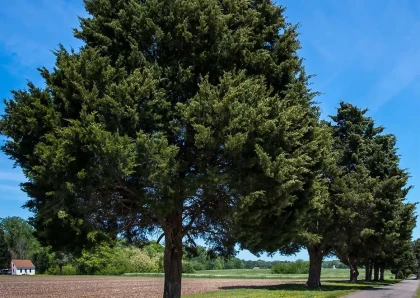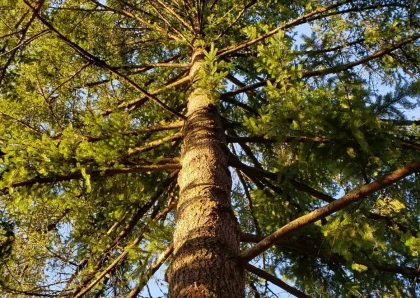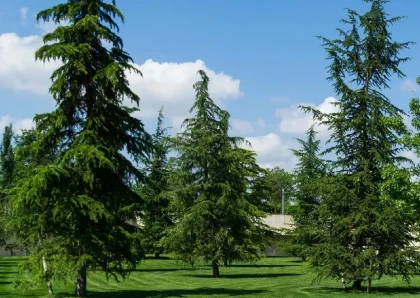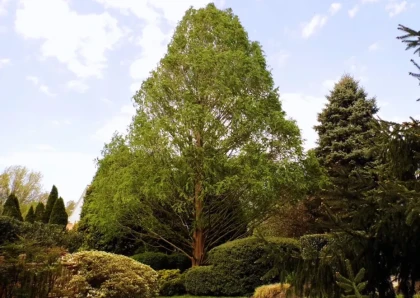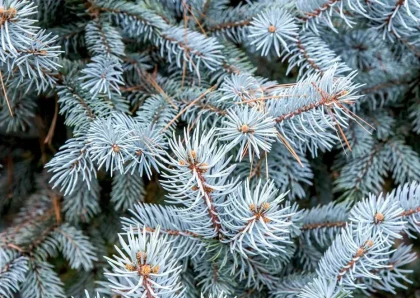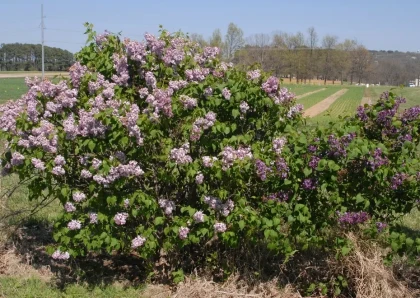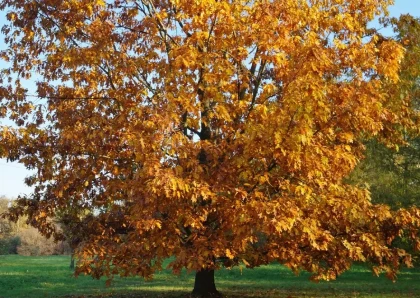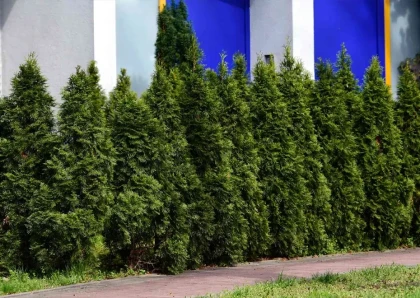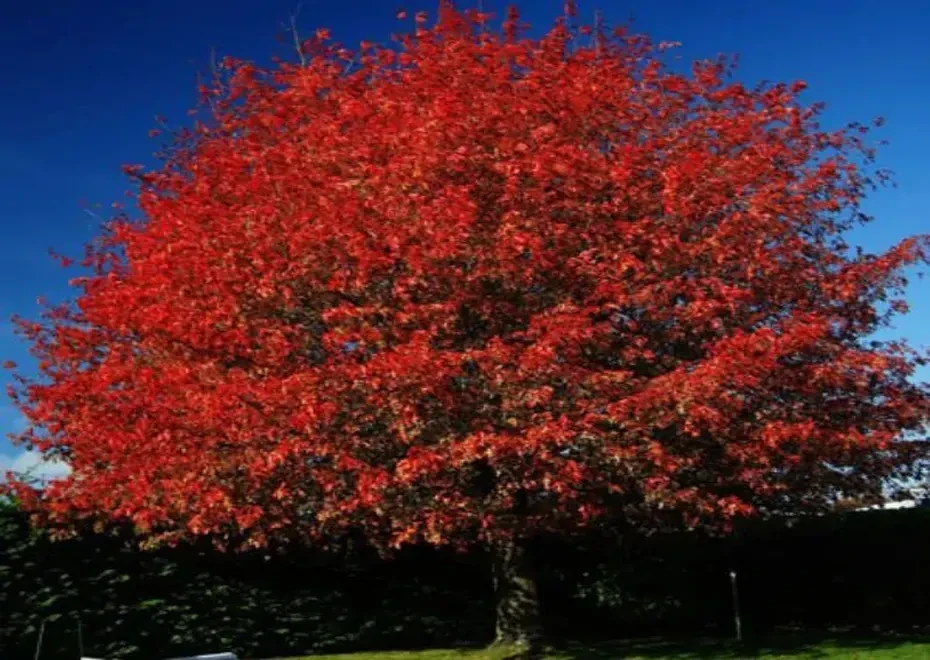
Shumard Oak
Overview
The Shumard Oak, scientifically known as Quercus shumardii, is a member of the red oak group native to North America. Known for its magnificent size and spectacular fall colors, it's a preferred choice for large landscapes and park settings.
Shumard Oak tree, also known as red oak, is a large, deciduous tree that is native to North America. It is known for its beautiful fall foliage, which can range in color from red to orange to yellow. Shumard Oak trees can grow up to 80 feet tall and have a spread of up to 60 feet. They are tolerant of a variety of conditions, including heat, drought, and poor soil.
Different types of Shumard Oak Tree
- Scarlet Oak: Scarlet Oak trees are the most common type of Shumard Oak tree. They have leaves that are bright red in the fall, which makes them a popular choice for landscaping. Scarlet Oak trees can grow up to 80 feet tall and have a spread of up to 60 feet. They are tolerant of a variety of conditions, including heat, drought, and poor soil.
- Pin Oak: Pin Oak trees are less common than Scarlet Oak trees. They have leaves that are dark green in the summer and turn yellow in the fall. Pin Oak trees can grow up to 70 feet tall and have a spread of up to 50 feet. They are tolerant of a variety of conditions, including heat, drought, and poor soil.
Different types of wood products can be made from Shumard Oak Tree
Shumard Oak wood is a strong and durable wood that can be used for a variety of purposes, including:
- Construction Shumard Oak's robustness makes it a popular choice for structural elements and building frameworks.
- Flooring: The coarse, grainy texture of this wood provides an attractive, rustic appeal while offering the toughness needed for a surface that sees regular, daily use.
- Furniture: Shumard Oak wood is esteemed for its resilience and aesthetic appeal. Its grain, when polished and stained, presents an eye-catching pattern that makes each piece of furniture unique.
- Interior Trim: As an interior trim, Shumard Oak brings a warm and natural aesthetic to rooms, enhancing doorways, windows, and baseboards with its rich, grainy texture.
- Veneer: Shumard Oak veneer, thin slices of wood, are often adhered to less expensive or less attractive materials, providing the outer appearance of solid oak without the accompanying cost.
- Cabinets and Paneling: Shumard Oak is ideal for crafting cabinets and paneling due to its workability and the elegant look it imparts.
- Doors: Doors made from this wood are not only sturdy but also add a touch of natural beauty to the interiors.
- Caskets: Shumard Oak is even used in the construction of caskets, chosen for its combination of strength, workability, and natural beauty, providing a dignified and respectful option for such a solemn product.
Benefits of using Shumard Oak Tree
Shumard Oaks are adaptable to various soil types, grow relatively fast for an oak, and are drought-tolerant once established. They offer shade, beauty, and increased property value. As deciduous trees, they allow sunlight through in winter.
- Beautiful fall foliage: Shumard Oak trees are known for their beautiful fall foliage, which can range in color from red to orange to yellow.
- Tolerate a variety of conditions: Shumard Oak trees are tolerant of a variety of conditions, including heat, drought, and poor soil.
- Long-lived: Shumard Oak trees can live for hundreds of years.
Cons of using Shumard Oak Tree
- Large size: Shumard Oak trees can grow very large, which can make them unsuitable for small properties.
- Shallow roots: Shumard Oak trees have shallow roots, which can make them susceptible to wind damage.
- Pests and diseases: Shumard Oak trees are susceptible to a few pests and diseases, such as oak wilt and scale.
Tips for planting and maintaining Shumard Oak Tree
Plant Shumard Oaks in well-draining soil in a location with full sun. Water regularly until the tree is established, then water during prolonged dry periods. Prune in winter or early spring to maintain shape and remove dead or diseased branches.
- Choose the right location: Shumard Oak trees need full sun and well-drained soil.
- Water regularly: Newly planted Shumard Oak trees need to be watered regularly, especially during the first year.
- Fertilize annually: Fertilize Shumard Oak trees annually with a balanced fertilizer.
- Prune as needed: Prune Shumard Oak trees as needed to maintain their shape and size.
Conclusion
Shumard Oak trees are beautiful and long-lived trees that can add value to any property. They are tolerant of a variety of conditions, but they can grow very large, which can make them unsuitable for small properties. Shumard Oak trees are also susceptible to a few pests and diseases, so it is important to inspect them regularly and treat any problems promptly.
- How fast does a Shumard Oak grow?
- Is Shumard Oak evergreen?
- Does Shumard Oak produce acorns?
- Is Shumard Oak good for furniture?
- Can Shumard Oak withstand drought?
Shumard Oak grows at a moderate rate, about 24 inches per year.
No, Shumard Oak is a deciduous tree that loses its leaves in the winter.
Yes, it produces large, attractive acorns that are a favorite food of various wildlife species.
Yes, the hard, strong wood of Shumard Oak is suitable for making furniture, flooring, and other wood products.
Once established, Shumard Oak shows good drought tolerance, making it suitable for regions with less frequent rainfall.
No listings available
Related Products
Questions & Answers
What do you want to know about this product?
Reviews (5)
OakOverseer87
Sturdy and Stunning Shumard
With its vivid fall colors and substantial stature, this oak is a standout in any landscape. Strong wood, too!
LeafLover45
Majestic Shade Provider
A Shumard Oak in the yard is a treat to the eyes and a great provider of shade. Bonus, wildlife love its acorns!
TreeTender23
Fast-Growing and Hardy
Impressed by how quickly this oak grows. Survived a tough winter with no issues. Great choice for any garden!
BarkBuddy64
Rustic Charm with Shumard Oak
This tree added an instant rustic charm to my property. Great investment for both aesthetics and functionality!
GreenThumb52
Shumard Oak - A Reliable Choice
Very adaptable and easy to grow. Shumard Oak is a reliable choice for both novice and experienced gardeners.




